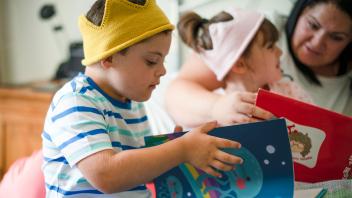Have you ever thought of how the digital world influences us — and by extension, our children? A number of recent articles made me rethink access, about the use and popularity of digital books by young readers (and their parents), and about what and how is presented in them in both mediums. We’ve all heard about the digital divide; a Pew study reports that 70 percent of American households have Internet connectivity. That’s the good news. The bad news is that broadband access still breaks down along socioeconomic lines. Most of those who have Internet access solely by smart phone are more likely to be in a lower socioeconomic group and to be a minority. In a recent Salon article, Larry Ortega seems to suggest that the divide may be even deeper. He contends that another digital divide is emerging: “one between ‘digital consumers’ on one hand and ‘digital contributors’ on the other” — with a potentially significant impact on perspectives presented. On the other hand, there’s interesting research citing young people’s preference for physical books. Books are three-dimensional, often handsome works of art, and need nothing other than a source of light to enter into them. Plus, they can be shared easily with groups or in families. Books (like high-speed broadband access) can also be limited by social and economic factors. Reading Is Fundamental says that in “underserved communities, only one in 300 children own books.” How can we help level the playing field? Why is a level field crucial? Is it even possible to achieve? These and many other questions are likely to continue long into the New Year.
About the Author
Reading Rockets’ children’s literature expert, Maria Salvadore, brings you into her world as she explores the best ways to use kids’ books both inside — and outside — of the classroom.

